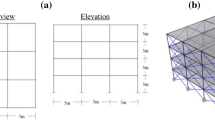Abstract
This paper examines whether or not one should require homeowners to adopt cost-effective loss reduction measures (LRMs) on residential structures in earthquake prone areas. Congress is considering requiring homeowners in earthquake-prone areas to purchase earthquake insurance as a condition for a federally insured mortgage but is still debating what action should be taken regarding mitigation. We show that the incentive to voluntarily adopt LRMs is reduced if homeowners are covered by full insurance rather than being uninsured. This result holds even if individuals have accurate information on the risk and maximize expected utility. The empirical evidence indicates that few homeowners adopt mitigation measures whether they are insured or uninsured. Most individuals do not behave as if they maximize expected utility and instead seem to employ simplified decision rules which suggest that mitigation measures are unnecessary or too costly in relation to the perceived benefits. These findings suggest that it may be necessary to strengthen building codes and/or require the adoption of mitigation measures on existing structures in return for reduced earthquake insurance premiums.
Similar content being viewed by others
References
Ballen, Debra. 1990. “The Insurance Industry's Response to a Major Earthquake: Lessons from the Past and Suggestions for the Future.” Paper presented at the 4th International Research and Training Seminar on Regional Development Planning for National Disaster Prevention, Nagoya, Japan (October 4–5) (mimeo).
Bea, Keith, and James E. Mielke. 1990. “Earthquake and Disaster Relief Policies: San Francisco Bay Area Earthquake.” Congressional Research Service (June 8).
Camerer, Colin, and Howard Kunreuther. 1989. “Decision Processes for Low Probability Events: Policy Implications.” Journal of Policy Analysis and Management 8 (4): 565–592.
Cohen, Linda, and Roger Noll. 1981. “The Economics of Building Codes to Resist Seismic Shock.” Public Policy (Winter): 1-29.
Dames and Moore. 1990. Loss-Reduction Provisions of a National Earthquake Insurance Program. Prepared for the Federal Emergency Management Agency, FEMA-200/September.
Dionne, George, and Louis Eeckhoudt. 1985. “Self-Insurance, Self Protection and Increased Risk Aversion.” Economic Letters 17:39–42.
Doherty, Neil A. 1975. “Some Fundamental Theorems of Risk-Management.” The Journal of Risk and Insurance XLII (3): 447–460.
Doherty, Neil A., Anne Kleffner, and Howard Kunreuther. 1992. “The Insurance Industry.” In Indirect Consequences of a Catastrophic Earthquake. Washington, DC: Federal Emergency Management Agency (July).
Drabek, Thomas, Alvin Mushkatel, and Thomas Kilijanek. 1983. Earthquake Mitigation Policy: The Experience of Two States. Boulder: Institute of Behavioral Science Program on Environment and Behavior, University of Colorado.
Ehrlich, I., and G. Becker. 1972. “Market Insurance, Self-Insurance and Self-Protection.” Journal of Political Economy 80:623–648.
Gallagher Associates. 1990. Mitigation of Principal Earthquake Hazards to Wood Frame Dwellings and Mobilehomes. Report prepared for State of California Department of Insurance. San Francisco: R.P. Gallagher Associates.
Hiebert, L.D. 1989. “Optimal Loss-Reduction and Increases in Risk Aversion.” Journal of Risk and Insurance LVI (2): 300–305.
Kunreuther, Howard, et al. 1978. Disaster Insurance Protection: Public Policy Lessons. New York: Wiley.
Litan, Robert. 1991. “A National Earthquake Mitigation and Insurance Plan: Response to Market Failures.” Prepared for The Earthquake Project, Boston, MA.
Moore, Michael J., and W. Kip Viscusi. 1990. Compensation Mechanisms for Job Risk: Wages, Workers' Compensation and Product Liability. Princeton, NJ: Princeton University Press.
Palm, Risa, Michael Hodson, R. Denise Blanchard, and Donald Lyons. 1990. Earthquake Insurance in California: Environmental Policy and Individual Decision Making. Boulder: Westview Press.
Roth, Richard, Jr. 1990. “Hearing on Earthquake Insurance and Earthquake Hazard Mitigation.” Testimony Before the Subcommittee on Policy Research and Insurance of the Committee on Banking, Finance and Urban Affairs. U.S. House of Representatives (September): 830-36.
Tubbesing, Susan K. 1990. “Hearing on Earthquake Insurance and Earthquake Hazard Mitigation.” Testimony Before the Subcommittee on Policy Research and Insurance of the Committee on Banking, Finance and Urban Affairs. U.S. House of Representatives (September): 151-66.
Tversky, Amos, Shmuel Sattath, and Paul Slovic. 1988. “Contingent Weighting in Judgement and Choice.” Psychological Review 95:371–384.
Violette, D.M., and L.G. Chestnut. 1983. “Valuing Reductions in Risk: A Review of the Empirical Estimates.” Report to the U.S. Environmental Protection Agency, Contract #68-01-6596.
Weinstein, Neil D. 1987. “Cross-Hazard Consistencies: Conclusions About Self-Protective Behavior.” In Taking Care: Understanding and Encouraging Self-Protective Behavior, edited by N. Weinstein. Cambridge: Cambridge University Press.
Author information
Authors and Affiliations
Rights and permissions
About this article
Cite this article
Kunreuther, H., Kleffner, A.E. Should earthquake mitigation measures be voluntary or required?. J Regul Econ 4, 321–333 (1992). https://doi.org/10.1007/BF00134925
Issue Date:
DOI: https://doi.org/10.1007/BF00134925




